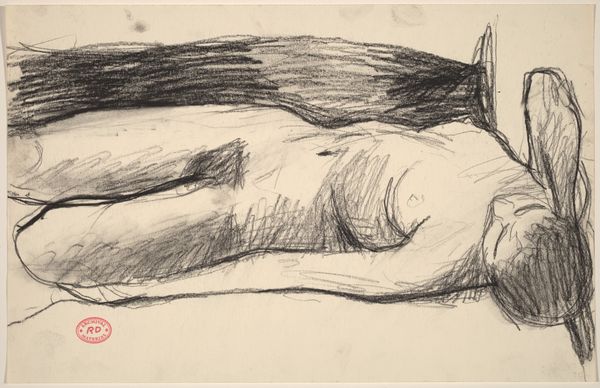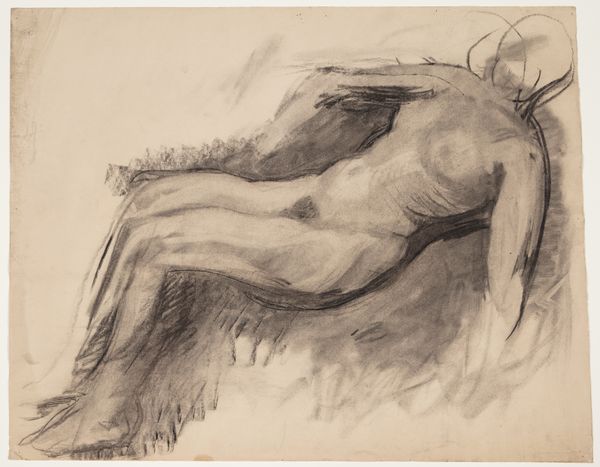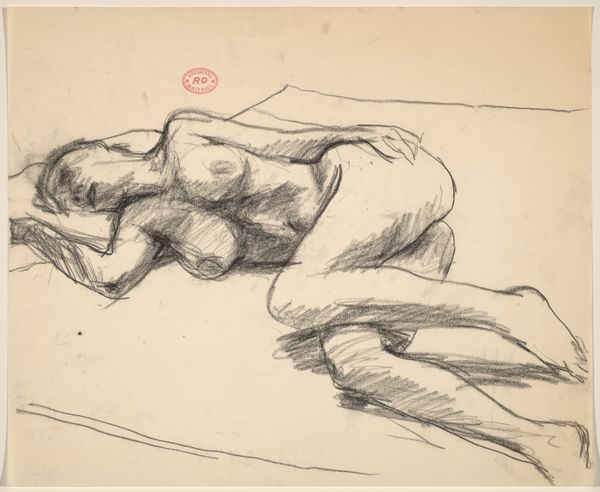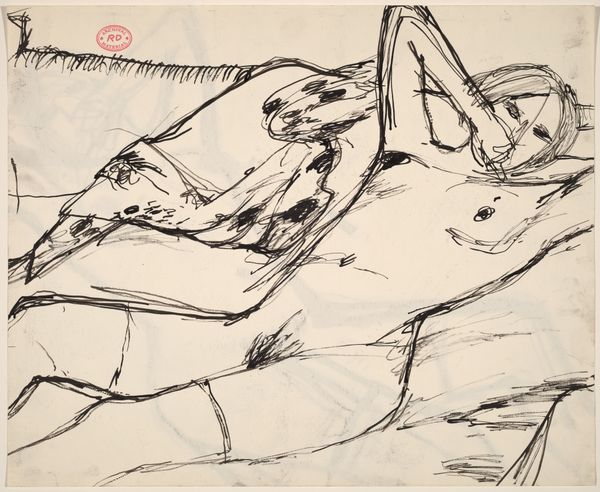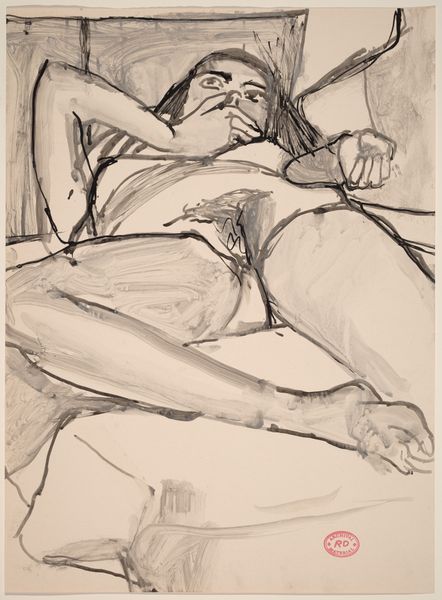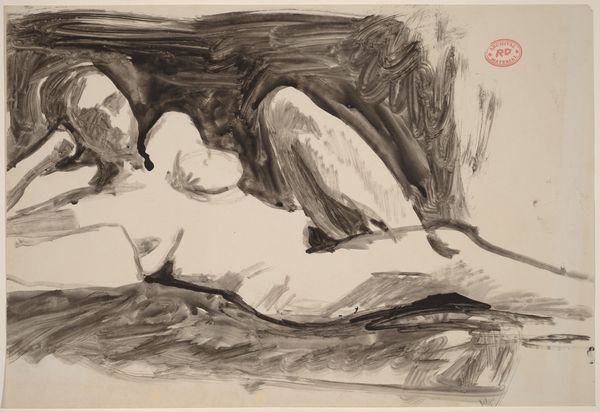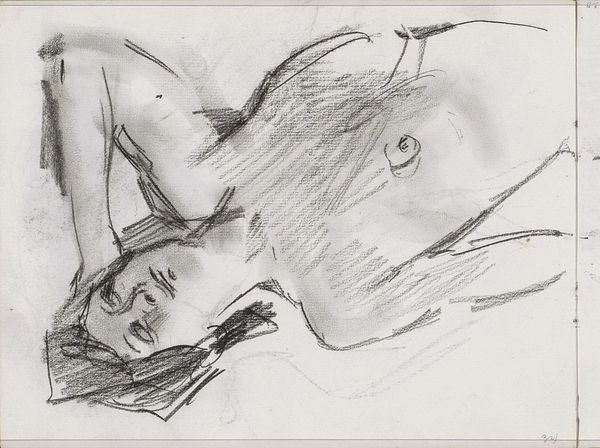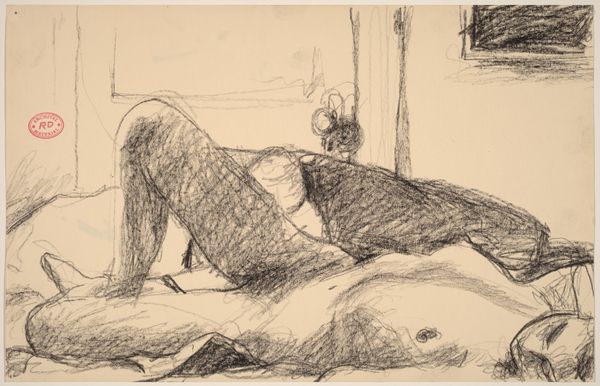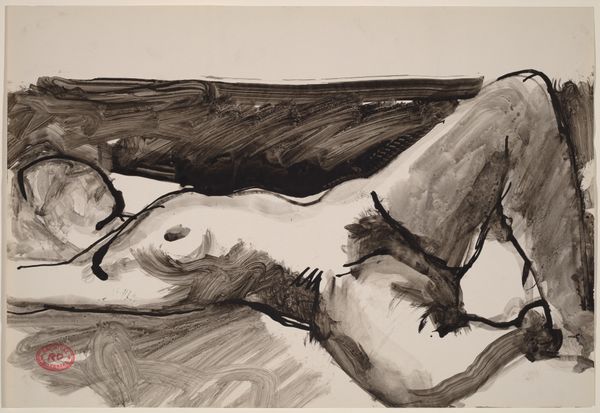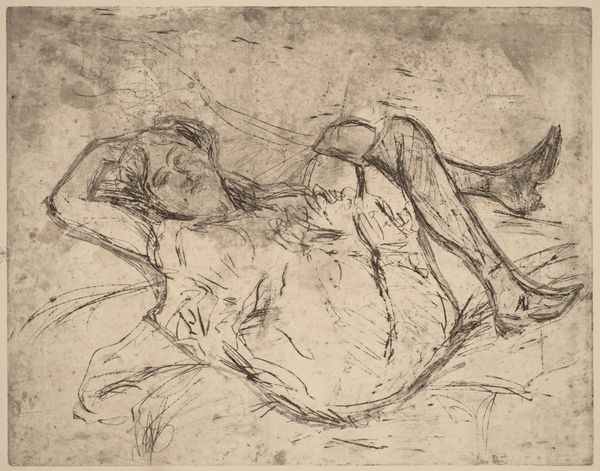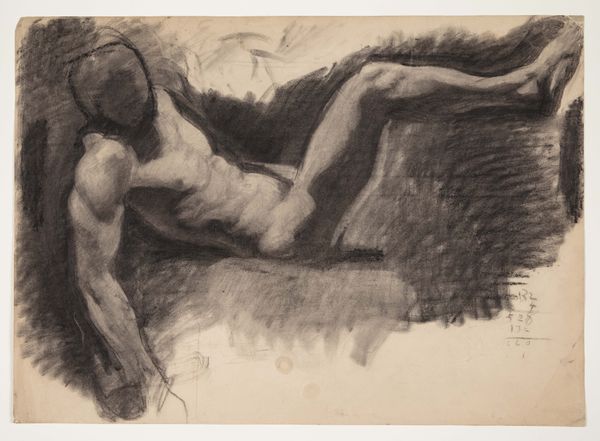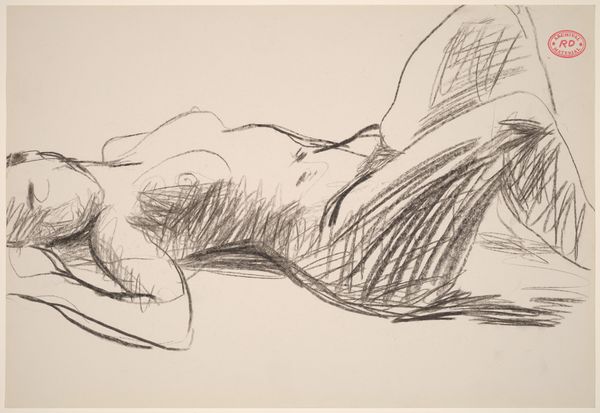![Untitled [female nude lying back on fabric] by Richard Diebenkorn](/_next/image?url=https%3A%2F%2Fd2w8kbdekdi1gv.cloudfront.net%2FeyJidWNrZXQiOiAiYXJ0ZXJhLWltYWdlcy1idWNrZXQiLCAia2V5IjogImFydHdvcmtzL2Q4OTA0ZDY1LTE4NDUtNGYwYy1hZWJjLTRkMDg3MGU5MmQ3OC9kODkwNGQ2NS0xODQ1LTRmMGMtYWViYy00ZDA4NzBlOTJkNzhfZnVsbC5qcGciLCAiZWRpdHMiOiB7InJlc2l6ZSI6IHsid2lkdGgiOiAxOTIwLCAiaGVpZ2h0IjogMTkyMCwgImZpdCI6ICJpbnNpZGUifX19&w=3840&q=75)
drawing, pencil
#
drawing
#
pencil sketch
#
figuration
#
bay-area-figurative-movement
#
pencil drawing
#
pencil
#
line
#
history-painting
#
academic-art
#
nude
#
realism
Dimensions: overall: 31.8 x 43.2 cm (12 1/2 x 17 in.)
Copyright: National Gallery of Art: CC0 1.0
Editor: We're looking at Richard Diebenkorn's "Untitled [female nude lying back on fabric]," created between 1955 and 1967, rendered in pencil. There's a real raw, almost unfinished feel to it; you can really see the artist's process laid bare on the page. What strikes you most about it? Curator: The overt display of labor in this piece is captivating. Diebenkorn’s choice of pencil, a readily available and relatively inexpensive material, challenges notions of preciousness typically associated with fine art nudes. How does the repetitive, almost frantic, application of the graphite contribute to the meaning? Editor: It makes it feel immediate, like it's about capturing a fleeting moment more than perfect representation. I wonder about the social context of the materials. Curator: Exactly. Post-war, there's a surge in artists engaging with everyday materials and mass production. Does this drawing then participate in democratizing art making, moving away from the rarified world of oil painting and bronze sculpture, for instance? The materiality almost speaks of an engagement with accessibility, reflecting a shift in how art is conceived and consumed. Editor: That’s interesting. So, the sketchiness isn't just a stylistic choice; it’s linked to a larger conversation about the value of art and who gets to make it? Curator: Precisely. The drawing invites us to consider the economic and social conditions shaping artistic practice and consumption in the mid-20th century. Even the support–presumably paper–was it handmade, mass-produced? These things all contribute. Editor: I hadn't considered it in that light. It changes how I see the artist’s intentions and the drawing’s broader implications. Curator: Absolutely, and it underscores the power of examining the artwork not only as an object of aesthetic contemplation, but also as a product of specific historical, social, and economic forces. Editor: Thanks! I’ll definitely look at materials with a different eye from now on.
Comments
No comments
Be the first to comment and join the conversation on the ultimate creative platform.
